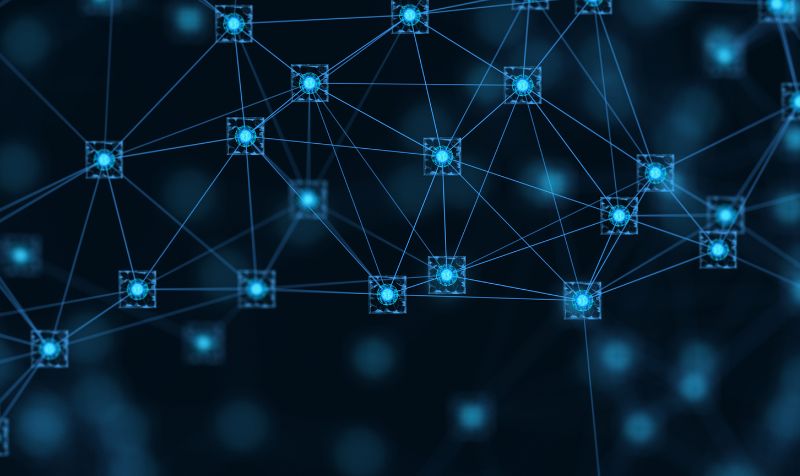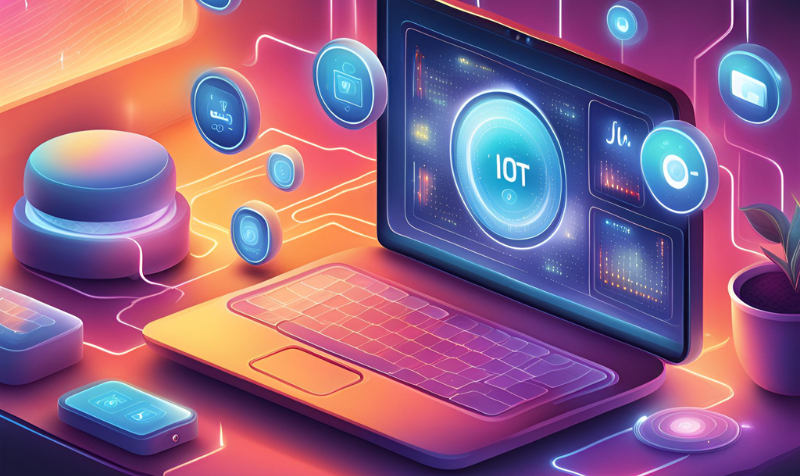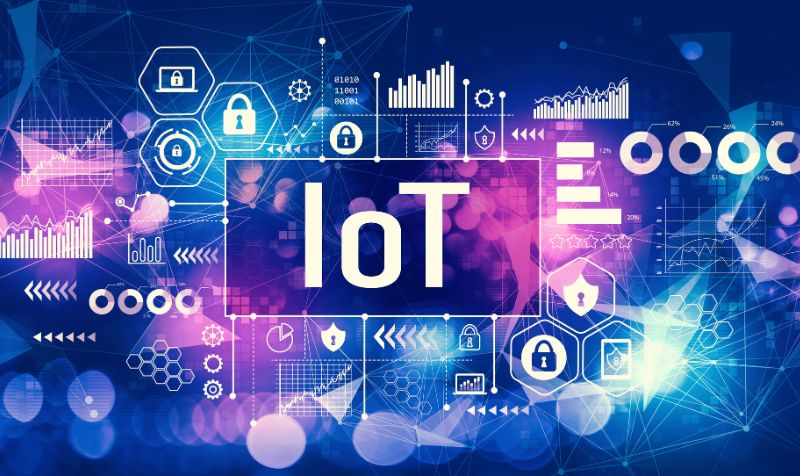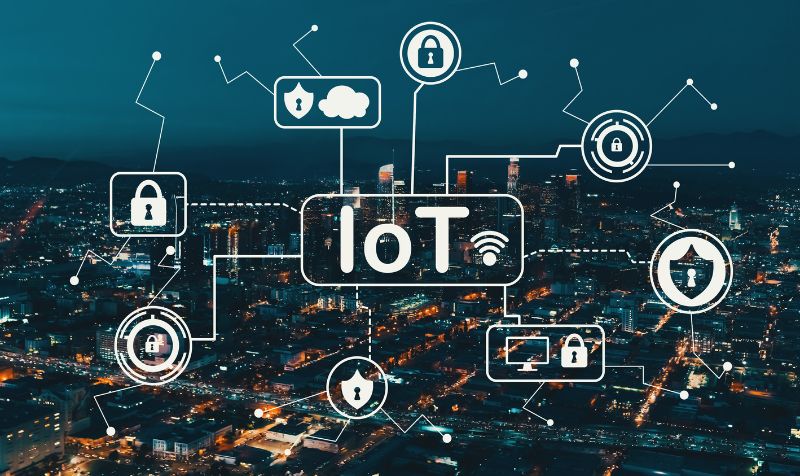
What is IoT device management?

What Is IoT Device Management?
IoT, or the Internet of Things, is a revolutionary technology that empowers businesses to adopt a strategic and data-driven approach, which in turn enhances operational efficiency, improves decision-making, and boosts innovation across various industries.
IoT is primarily about collecting data from multiple different devices, which means that several intricacies need to be taken care of during the entire process of data collection. This is where IoT device management comes in.
IoT device management refers to the collection of various tools and technologies that help you provision, monitor, and efficiently maintain various connected IoT devices or objects in your overall network.
In this post, we will explore the realm of IoT device management, exploring its significance, key strategies, prominent platforms, and the numerous benefits it offers to businesses.
Let’s dive in!
Table of Content:
1. What Is Device Management in IoT?
2. What Is the Process of IoT Device Management?
3. Features of IoT Device Management
- Remote Management and Updation of Devices
- Bulk Device Onboarding
- Integrations
- Operational Diagnostics
- Security
4. Benefits of IoT Device Management
- Better Device Organization
- Faster Registration of IoT Devices
- Confidentiality
5. Platforms and Software for IoT Device Management
- Azure IoT Hub
- Amazon AWS IoT Core
- Google Cloud IoT Core
6. IEEE Courses to Learn IoT Device Management
7. Wrapping Up
What Is Device Management in IoT?

IoT Device Management is the process of tracking and managing the overall life cycle of various IoT devices within an existing ecosystem. Put simply, implementing an IoT device management solution requires a robust software solution that can access, diagnose, and manage the functionality of your deployed IoT devices remotely.
Here are the factors that highlight the significance of this capability:
- The size of your network plays a pivotal role in determining the complexity of device management requirements.
- The ease of physical access to devices impacts the feasibility of direct management tasks and necessitates remote management capabilities.
- The geographical spread of devices introduces logistical challenges, emphasizing the need for centralized management solutions.
Irrespective of the number or location of your IoT devices, you would be required to check on these aspects and update their capabilities and intelligence with firmware updates on a regular basis. Alternatively, you can also download security patches to make sure IoT devices are secure, up-to-date, and in compliance.
What Is the Process of IoT Device Management?
To manage your IoT devices effectively, the first and foremost requirement is to understand the overall device management lifecycle thoroughly.
Here are the main steps involved in the process:
- Provisioning of IoT devices: This involves the initial setup and registration of devices onto the network, establishing connectivity, and identifying them within the ecosystem.
- Authentication of devices: Authentication verifies the legitimacy of IoT devices, ensuring that only authorized devices can access network resources, thus enhancing security.
- Configuration of devices: Configuring IoT devices entails remotely updating their settings and parameters, maintaining consistency in user behavior, and optimizing functionality as needed.
- Monitoring of IoT devices: Monitoring provides real-time insights into device performance, security, and overall status, enabling proactive management and issue resolution.
- Diagnostics: Diagnostics grant remote access to device logs, facilitating swift troubleshooting and minimizing downtime by identifying and resolving issues promptly.
- Software and firmware updates: Regular updates are essential to address bugs, vulnerabilities, and introduce new features, ensuring that IoT devices remain secure, reliable, and up-to-date with evolving standards.
Features of IoT Device Management
Here are some common features of IoT device management:
1. Remote Management and Updation of Devices
The best device management platform offers support for remote troubleshooting, which helps users resolve issues quickly and reduces manual effort.
2. Bulk Device Onboarding
The IoT device management software is designed to enable easy onboarding using a network key and other similar identification credentials. This device onboarding happens remotely to establish a secure connection between the endpoint device and the IoT service.
3. Integrations
IoT device management platforms offer robust compatibility with your hardware ecosystem and application codebase. It is an essential feature of this software that connects the software with downstream data servers and enterprise apps for seamless and integrated workflows.
4. Operational Diagnostics
Diagnostics can help you gain useful insights into your IoT operations. Most IoT device management solutions have centralized capabilities.
5. Security
The software for IoT device management is equipped with detailed device logs to detect instances of unauthorized access and anomalous use. Likewise, real-time updates sent via the software’s dashboard can be instrumental in diagnosing issues and conducting root-cause analysis quickly.
How Does IoT Device Management Work?

Below are some of the key steps involved in the workings of IoT device management:
1. Registering Devices
The first step in IoT device management is registering the device to make it connected to the web.
For example, in AWS IoT, each device is known as an action and can either be a physical device or a logical representation of a device. Depending on your requirements, you can register one device at a time or multiple devices.
2. Configuring and provisioning of devices
Once the device is registered, you also need to provision your device to make it ready for use. For instance, in the case of an AWS IoT platform, for provisioning, you would require the below three resources in AWS IoT core:
- An IoT policy
- IoT device/sensor
- An X.509 Certificate
3. Sending and receiving data
You have the option of receiving and sending data from IoT devices in real-time using the two protocols below:
- MQTT: Lightweight sub/pub protocol used for specific areas where network bandwidth is restricted, making it difficult to transfer large amounts of data.
- HTTP: A protocol used in sending data over the web.
4. Data Analysis
This is the last step in IoT device management, which involves analyzing the data generated from IoT devices by applying various computation techniques and actions to that information.
Benefits of IoT Device Management
There are several benefits that you can get from seamless IoT device management. Some of these benefits include:
1. Better Device Organization
Effective device management offers powerful capabilities to organize your IoT devices into different groups and manage relevant access policies for each group accordingly. This helps to simplify the process of tracking devices.
2. Faster Registration of IoT Devices
IoT device management simplifies and shortens the overall development and deployment times of connected IoT devices so that companies can make entire networks operational immediately.
3. Confidentiality
IoT networks can handle sensitive information about your business and customers to prevent some data breaches that leak private information. A robust IoT platform makes it much easier to ensure the security of IoT devices. It can enforce robust security standards, thus helping you protect data by implementing segmentation and data encryption.
Platforms and Software for IoT Device Management
Here are some top platforms for IoT device management that enable organizations to monitor, control, and manage their IoT devices effectively:
1. Azure IoT Hub
Azure IoT Hub is one of the top IoT solutions fully managed by Microsoft. The platform enables completely secure and reliable bi-directional communication. Some of the key features of the software include device-to-cloud messaging, cloud-to-device messaging, built-in security, and device twin functionality.
2. Amazon AWS IoT Core
Amazon AWS IoT Core is another popular platform for IoT device management, specifically designed to connect, manage, and secure IoT devices at scale. The platform offers a wide range of tools and services to facilitate seamless integration with other Amazon Web Services. Among the key features of the platform are secure authentication, device registry, device SDKs, and more.
3. Google Cloud IoT Core
Cloud IoT Core is a popular IoT device management software from the cloud technology leader Google. The platform helps you effortlessly connect, manage, and ingest data from distributed endpoints. Being a fully managed service, it requires no technical effort on-site.
IEEE Courses to Learn IoT Device Management
Whether you are a student, an industry professional, or an academician, if you’re also intrigued by IoT applications or the potential they hold for helping you advance your career, the first step is to gain the right knowledge and skill sets in the field.
At IEEE, you can explore a wide range of IoT courses and other resources to embrace IoT’s endless possibilities and continue your learning journey to unlock its full potential.
Here are the top IEEE courses that you can consider to learn IoT device management
- Introduction to IoT: This is a short course designed to give an overview of the Internet of Things. It provides a detailed understanding of a new dimension of connectivity in the Internet of Things.
- Introduction to Embedded Systems and ARM for IoT: The course gives you an introduction to embedded systems and covers the ARM Cortex M4 processor core architecture in detail.
- Sensor Networks for the Internet of Things: The course mainly covers networking and IEEE 802.15.4 standards . This course also provides a detailed understanding of Addressing, UDP, Clustering, Routing,and mormor.
- Communication Models and Protocols for IoT Systems: This course gives you an introduction to IoT protocols and edge computing, along with covering essential protocols such as MQTT and CoAP. Apart from this, it also covers REST APIs, the IoT Protocol Stack, IoT Gateway Design and Characteristics, and more.
Wrapping Up
Efficient IoT device management is essential for achieving and ensuring seamless IoT operations. This means that businesses will not only have to bring all of these devices within their network perimeter but must also plan for security policies, timely updates, diagnostics, user authentication, and more.
This can all be achieved by building an extensive plan and detailed strategy for managing IoT devices throughout their lifecycle. And one of the ways to navigate this better is by choosing the best IoT device management platform for your specific use case.
FAQs
1. Why is device management important in IoT?
IoT device management is important because, if not managed and secured properly, the internet or most cloud-connected devices can be accessed by malicious actors.
2. What is IoT system management?
IoT system management refers to processes used for managing the entire lifecycle of Internet of Things (IoT) devices and sensors, from onboarding to monitoring and maintenance.
3. What is device control in IoT?
Device control in the IoT involves using dedicated applications or platforms offered by the device manufacturer. These applications act as a bridge between the user and the IoT device, offering a user-friendly interface for managing settings.
Post Tags : Internet of things IoT IoT device management
Share:
Social Media
Most Popular
Subscribe To Our Weekly Newsletter
Categories
Filter by tags
-
what is cloud computing
-
Visualization in cloud computing
-
smart contracts
-
sensors
-
Regression in machine learning
-
Python programming
-
Python developer salary
-
Python
-
protocols
-
ML
-
Machine learning MCQ
-
Machine Learning
-
IoT with examples
-
IoT sensors
-
IoT device management
-
IoT
-
Internet of things
-
How to learn python
-
Healthcare
-
Hands-on machine learning
-
Examples of machine learning
-
Ethereum
-
Decentralized
-
cryptocurrency
-
Cloud Computing
-
Cloud
-
Blockchain developer salary
-
Blockchain
-
Bitcoins
-
Bias in machine learning
-
Artificial Intelligence
-
Actuators in IoT
-
actuators
-
5g
Related Posts

What is IoT and How to Learn IoT: A Definitive Guide (2024) – Copy
The blockchain market has immense potential, accompanied by staggering job opportunities, as evidenced by recent statistics. By 2023, worldwide expenditure on blockchain solutions is projected

What is IoT and How to Learn IoT: A Definitive Guide (2024)
Introduction The first question that comes to mind is, “What is the full form of IoT?” IoT stands for the Internet of Things, which refers

What is Blockchain 101: A Definitive Guide
Blockchain is quickly becoming a buzzword in various industries. This technology was popularised with the advent of Bitcoin in 2008. However, blockchain applications have gone

IoT Courses: From Free to Paid All Included [Updated 2024]
Introduction In this comprehensive guide on IoT courses, we will explore the field of the Internet of Things and its valuable skills for career advancement,
